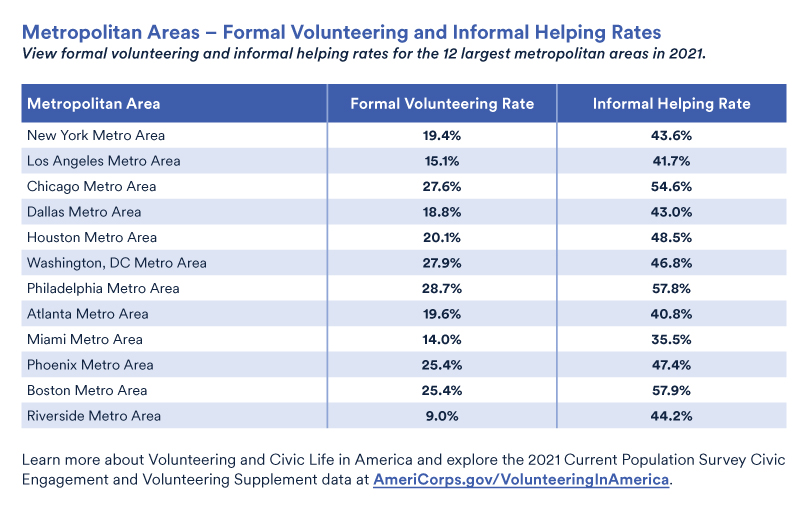Honoring Martin Luther King Jr.’s Legacy With Census Data on Volunteerism, Voting Rights, Education and Economy
As the nation observes Martin Luther King Jr. National Day of Service January 15, we pay tribute through census data and resources showing the civil rights leader’s impact on everything from voting rights and volunteerism to educational and economic progress.
Following passage of the Civil Rights Act of 1964, the U.S. Census Bureau began collecting voting and registration data as a supplement to the Current Population Survey (CPS) every two years to ensure that elections are fair and open to all citizens regardless of race.
The percentage of Black or African American students graduating from high school increased from 25.7% in 1964 to 90.3% in 2021.
In 1964, the Census Bureau reported that 69% of all voters age 21 and older and 58.5% of Black or African American voters participated in the U.S presidential election between Democrat Lyndon B. Johnson and Republican Barry M. Goldwater. In 2020, the share (66.8%) of all voters who went to the polls was lower but the share (62.6%) of Black voters went up.
Day of Service
MLK Day is the only federal holiday designated by Congress as a National Day of Service. In partnership with the Census Bureau, AmeriCorps conducts a longitudinal survey every two years about volunteerism and other forms of civic engagement in the United States.
The survey shows the 10 states with the highest formal volunteering (helping others through organizations) rate.

Other states rank highest for informal helping. Informal helping involves assisting others outside of an organization such as doing favors for neighbors.

The survey also reveals the largest metropolitan areas with the highest rates of both formal and informal volunteering and civic engagement.

King’s Legacy: Changes in Education of Nation’s Black Population
The CPS, sponsored by the Census Bureau and Bureau of Labor Statistics (BLS), shows dramatic increases since 1964 in educational attainment among the nation’s Black or African American population.
The percentage of Black or African American students graduating from high school increased from 25.7% in 1964 to 90.3% in 2021.
Many of these high school graduates went on to attend college: 2.72 million in 2021 compared to only 306,000 in 1964.

Statistics In Schools: Showcasing Black History
The Census Bureau’s Statistics in Schools (SIS) program provides many activities featuring Census Bureau data designed to help educators teach their students about America’s people, places and the economy.
The Fun Facts activity below, for example, highlights some key statistics about the Black population, including the number of Black-owned businesses in the United States.

During Black History Month in February, the Census Bureau will highlight more data on the nation’s Black population through more SIS activities, historical pages, key data and infographics.
Adam Grundy is a supervisory statistician in the Census Bureau’s Economic Management Division.






